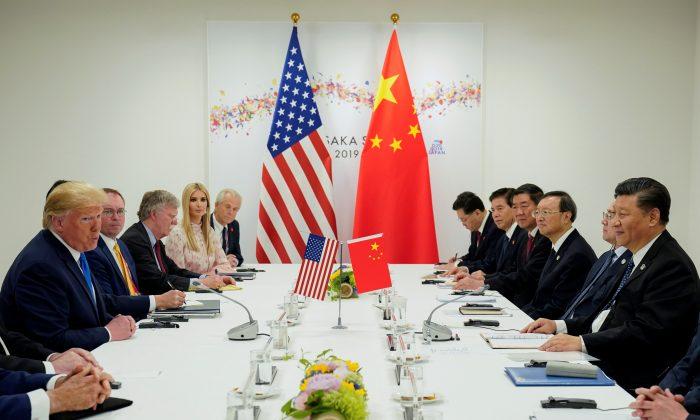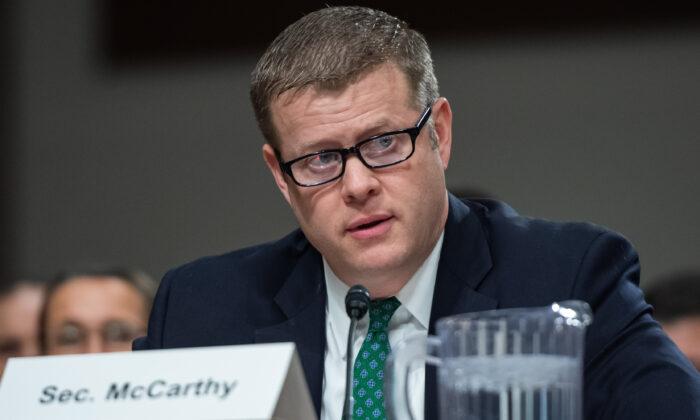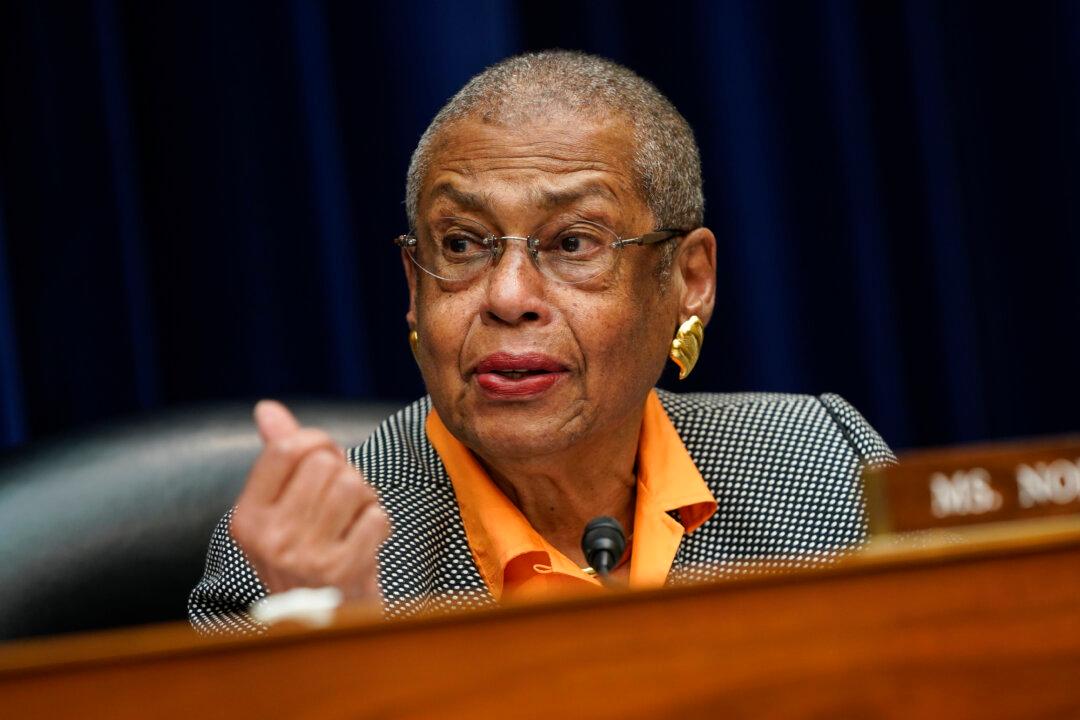NEWS ANALYSIS
President Donald Trump published three tweets on June 30 regarding the just-completed Trump-Xi G20 meeting, and reaffirmed that results were “far better than expected.”
On June 29, after the meeting with Chinese Communist regime leader Xi Jinping, President Trump told reporters while meeting with the Turkish President Tayyip Erdogan that the meeting with Xi was a “very, very good meeting, better than expected. We’re right back on track.”
Trumps Speaks of Trump-Xi Meeting’s Success on Twitter
https://twitter.com/realDonaldTrump/status/1145097776658812929
U.S.-China Talks Resume Under Six Conditions
At the beginning of last month, U.S.-China trade talks that had reached a 90 percent agreement fell through due to a sudden change of heart on the Chinese side. The United States’ side states that Beijing called for a withdrawal of most of the promises that had already been agreed to, including necessary amendments and enforcement mechanisms.A few weeks after talks stalled, Trump and Xi held a lunch meeting in Osaka, Japan at noon on June 29. In the afternoon, President Trump said at a press conference that the U.S. side will continue negotiations with China starting with unresolved issues from before negotiations stalled to see if an agreement can be reached.
President Trump also emphasized that “at least for now,” he would not impose additional tariffs on Chinese goods. He is also not in a rush to reach an agreement, but if subsequent negotiations do not reach a good result, he can ”add tariffs at any time.”
These statements by Trump imply that the United States has yet to accept China’s previous requests to withdraw a majority of promised agreements.
According to President Trump’s press conference statements and June 30 tweets, future U.S.-China talks will likely hinge on six points.
- Talks will resume from the 90 percent agreement reached before talks collapsed in the beginning of May.
- During the negotiation period, the United States will not increase the current 25 percent punitive tariff on $250 billion of Chinese goods.
- Beijing will begin to purchase large quantities of American agricultural products.
- In addition to the $250 billion in Chinese goods, the United States will not impose tariffs on another $325 billion in Chinese goods, but the United States does not rule out the possibility of “adding tariffs at any time”.
- The United States is not in a hurry to make a deal and seeks to reach a good deal.
- The current US-China talks are “very good.”
The Future of U.S.-China Negotiations Lends Well for a U.S. Victory
The results of the recent Trump-Xi meeting did not set a 90-day temporary cease-fire period as in the Trump-Xi meeting in Argentina last December. That is to say, there is no timetable for future negotiations, and there is no time pressure for the two sides to reach an agreement. President Trump made it clear that he gives more weight to the quality of the agreement and expects the final agreement to have historical significance.According to President Trump’s statement at a June 29 press conference, the two sides will continue negotiations on the basis of the 90 percent agreement reached before talks broke down at the beginning of last month, which means that future negotiations will focus on issues concerning the remaining 10 percent.
The remaining issues are assumed to be the most difficult. Myron Brilliant, executive vice president of the American Chamber of Commerce, told reporters on a conference call on May 2 that the U.S.-China talks are nearly 90 percent complete and that the most difficult issue is the additional (punitive) tariffs. The Chinese side requires that all tariffs be dropped. However, the U.S. side must retain a portion to order to push China to fulfill its commitments.
Xi has agreed to the United States maintaining its current additional tariffs during the negotiation period. It is not clear whether this indicates that China is no longer requiring the United States to drop tariffs.
If China still insists that additional tariffs be dropped, it is unlikely that negotiations can be completed in a short time period.
President Trump expressed after negotiations broke down in early May that China wants to wait until 2020 to resume talks, because it is possible that the White House will change hands. However, Trump warned that if he succeeds in running for re-election, Beijing will face a more difficult negotiation situation.
Additionally, if President Trump is not satisfied with China’s promises during the negotiation period, or if China’s has another 180-degree turnaround, the United States can immediately increase taxes on Chinese goods.
The recent Trump-Xi meeting did not set a timetable. The U.S. will maintain the current tariff on $250 billion of Chinese goods, and receives tens of billions of U.S. dollars in tariff revenue per month, which can be used to subsidize farmers’ losses. At the same time, China has also promised to increase its efforts in purchasing agricultural products. In addition, the United States can still impose additional taxes on hundreds of billions of Chinese goods if necessary.
Under these circumstances, even if U.S.-China negotiations drag on to after the 2020 presidential election, this may not be a bad alternative for Trump. Perhaps this is why President Trump said that the outcome of the Trump-Xi meeting was “far better than expected.”





Friends Read Free